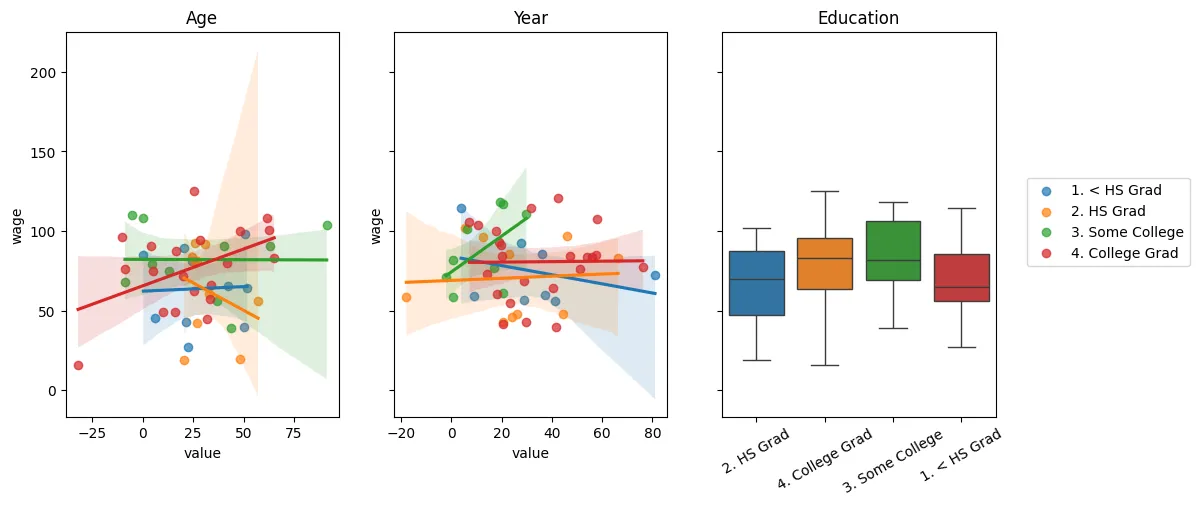我试图使用seaborn重新创建《统计学习导论》一书中的以下图表。 
我想要使用seaborn的lmplot创建前两个图,使用boxplot创建第二个图。主要问题在于lmplot创建了一个facetgrid,根据这个回答,这迫使我hackily添加另一个matplotlib轴以绘制盒形图。我想知道是否有更简单的方法来实现这一点。下面,我必须进行相当多的手动操作才能获得所需的绘图。
seaborn_grid = sns.lmplot('value', 'wage', col='variable', hue='education', data=df_melt, sharex=False)
seaborn_grid.fig.set_figwidth(8)
left, bottom, width, height = seaborn_grid.fig.axes[0]._position.bounds
left2, bottom2, width2, height2 = seaborn_grid.fig.axes[1]._position.bounds
left_diff = left2 - left
seaborn_grid.fig.add_axes((left2 + left_diff, bottom, width, height))
sns.boxplot('education', 'wage', data=df_wage, ax = seaborn_grid.fig.axes[2])
ax2 = seaborn_grid.fig.axes[2]
ax2.set_yticklabels([])
ax2.set_xticklabels(ax2.get_xmajorticklabels(), rotation=30)
ax2.set_ylabel('')
ax2.set_xlabel('');
leg = seaborn_grid.fig.legends[0]
leg.set_bbox_to_anchor([0, .1, 1.5,1])
DataFrames的示例数据:
df_melt = {'education': {0: '1. < HS Grad',
1: '4. College Grad',
2: '3. Some College',
3: '4. College Grad',
4: '2. HS Grad'},
'value': {0: 18, 1: 24, 2: 45, 3: 43, 4: 50},
'variable': {0: 'age', 1: 'age', 2: 'age', 3: 'age', 4: 'age'},
'wage': {0: 75.043154017351497,
1: 70.476019646944508,
2: 130.982177377461,
3: 154.68529299562999,
4: 75.043154017351497}}
df_wage={'education': {0: '1. < HS Grad',
1: '4. College Grad',
2: '3. Some College',
3: '4. College Grad',
4: '2. HS Grad'},
'wage': {0: 75.043154017351497,
1: 70.476019646944508,
2: 130.982177377461,
3: 154.68529299562999,
4: 75.043154017351497}}


PairGrid。 - mwaskom